Related Research Articles
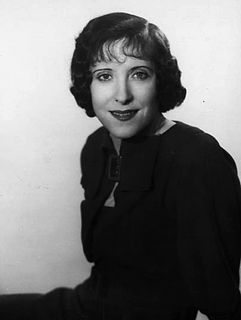
Grace Ethel Cecile Rosalie Allen was an American vaudevillian and comedian who became internationally famous as the zany partner and comic foil of husband George Burns, her straight man, appearing with him on radio, television and film as the duo Burns and Allen.

Ethel Ruby Keeler was an American actress, dancer, and singer known for her on-screen pairing with Dick Powell in a string of successful early musicals at Warner Bros., particularly 42nd Street (1933). From 1928 to 1940, she was married to actor and singer Al Jolson. She retired from show business in the 1940s, but made a widely publicized comeback on Broadway in 1971.
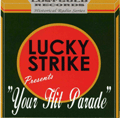
Your Hit Parade was an American radio and television music program that was broadcast from 1935 to 1953 on radio, and seen from 1950 to 1959 on television. It was sponsored by American Tobacco's Lucky Strike cigarettes. During its 24-year run, the show had 19 orchestra leaders and 52 singers or groups. Many fans inaccurately referred to the show as The Hit Parade.

The Bell Telephone Hour is a concert series that began April 29, 1940, on NBC Radio, and was heard on NBC until June 30, 1958. Sponsored by Bell Telephone as the name implies, it showcased the best in classical and Broadway music, reaching eight to nine million listeners each week. It continued on television from 1959 to 1968. Throughout the program's run on both radio and television, the studio orchestra on the program was conducted by Donald Voorhees.
The Voice of Firestone was a radio and television program of classical music. The show featured leading singers in selections from opera and operetta. Originally titled The Firestone Hour, it was first broadcast on the NBC Radio network on December 3, 1928 and was later also shown on television starting in 1949. The program was last broadcast in 1963.

Ethel Shutta was an American actress and singer, who came to prominence through her performances on Jack Benny's radio show, her role in the early Eddie Cantor musical Whoopee!, and her Broadway comeback in Follies at the age of 74. In a 1934 vote held by Radio Stars, she came in second place, behind Annette Hanshaw, as the best "female popular singer."
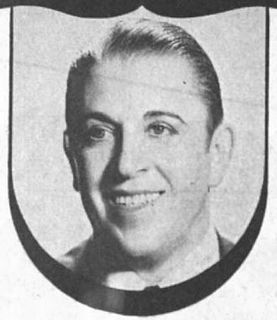
George Edward Olsen Sr. was an American bandleader.

Catherine Annette Hanshaw was an American Jazz Age singer. She was one of the most popular radio stars of the 1930s. Over four million of her records had been sold by 1934.
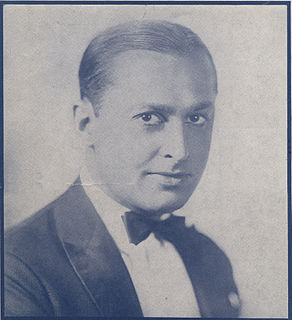
Benjamin Anzelwitz, known professionally as Ben Bernie, was an American jazz violinist, bandleader, and radio personality, often introduced as "The Old Maestro". He was noted for his showmanship and memorable bits of snappy dialogue, being part of the first generation of "stars" of American popular music, alongside other artists such as Paul Whiteman, Ted Lewis and Al Jolson.

The Big Broadcast of 1936 is a 1935 American comedy film directed by Norman Taurog, and is the second in the series of Big Broadcast movies.
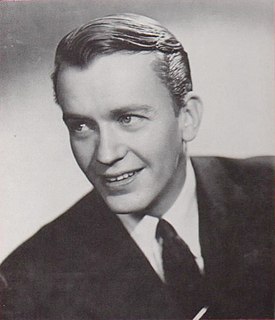
Robert J. Sherwood Jr. was an American guitarist, trumpeter, bandleader, and radio host.
Franklyn MacCormack was an American radio personality in Chicago, Illinois, from the 1930s into the 1970s. After his death, Ward Quaal, the president of the last company for which MacCormack worked, described him as "a natural talent and one of the truly great performers of broadcasting's first 50 years."
"Don't Blame Me" is a popular song with music by Jimmy McHugh and lyrics by Dorothy Fields. The song was part of the 1932 show Clowns in Clover and was published in 1933. Popular versions that year were recorded by: Ethel Waters, Guy Lombardo, and Charles Agnew.

George Ansbro was a radio announcer for NBC and ABC for six decades, working with soap operas, big bands, quiz shows and other programs.

Gertrude Lightstone Mittelmann, also Gertrude Mittelmann, and Mrs. Jesse Mittelmann, was an American concert pianist. The daughter of a well-known New York surgeon, Dr. Abraham (Albert) Lightstone (1874–1955), she was one of the first women radio show hosts, notably at WQXR-AM 1550 KC. She gave one of her first American concerts at Haddon Hall in 1928. Vinyl and metal record albums were recorded of her performances as a symphonic concert pianist for various orchestras and recitals as a solo artist. In addition, many of her broadcasts as a radio host were recorded on record albums. She participated in numerous cultural and community activities.

Nelson Case was an American radio and television announcer.

Don Bestor was an American bandleader, probably best known for directing the orchestra in the early years of The Jack Benny Program on old-time radio.

The March of Time is an American radio news documentary and dramatization series sponsored by Time Inc. and broadcast from 1931 to 1945. Created by broadcasting pioneer Fred Smith and Time magazine executive Roy E. Larsen, the program combined actual news events with reenactments. The "voice" of The March of Time was Westbrook Van Voorhis. The radio series was the basis of the famed March of Time newsreel series shown in movie theaters from 1935 to 1951.

Paul Edward Prentiss was an actor in the era of old-time radio. He was perhaps best known for portraying the title role on the radio version of Captain Midnight.
References
- 1 2 Sies, Luther F. (2014). Encyclopedia of American Radio, 1920-1960, 2nd Edition. McFarland & Company, Inc. ISBN 978-0-7864-5149-4. P. 478.
- ↑ "Favorite of Stage to Be Heard Friday". Belvidere Daily Republican. Illinois, Belvidere. September 4, 1930. p. 2. Retrieved October 26, 2016– via Newspapers.com.

- ↑ "(untitled brief)" (PDF). What's on the Air. II (2): 39. December 1930. Retrieved 27 October 2016.
- ↑ "Helps Inaugurate New Series Friday". Hartford Courant. August 31, 1930. p. 40. Retrieved June 29, 2022.
- ↑ "(Nestle's Chocolateers advertisement)". Variety. June 6, 1933. p. 41. Retrieved 28 October 2016.
- 1 2 Turner, Dyal (October 1933). "Reviewing the Current Programs" (PDF). Radio Fan-Fare. XXX (6): 14. Retrieved 28 October 2016.